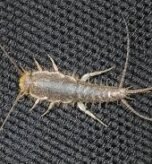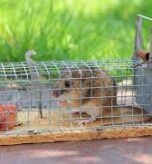Seeing a cockroach is an unwelcome sight for any homeowner. These pests pose serious health risks because they carry dangerous bacteria, transmit diseases, and produce allergens that can cause rashes and asthma attacks. Therefore, effective cockroach control requires a multi-faceted approach that combines proper identification, sanitation, and targeted treatments. This guide will walk you through everything you need to know to get rid of cockroaches and keep them from coming back.
Understanding the Enemy: Common Cockroach Species
The first step in any successful cockroach control plan is knowing what you are up against. Several species commonly infest properties, each with different habits.
German Cockroach
The German cockroach is the most widespread indoor pest in urban areas. It is typically light brown with two dark stripes on its back and measures about ½ inch long. Furthermore, these roaches are prolific breeders, producing a new generation in about 100 days. They spend their entire lives indoors.
American Cockroach
Often called water bugs, American cockroaches are much larger, reaching up to 2 inches in length. They are reddish-brown and both males and females can fly. While they primarily live outdoors and in sewers, they frequently move indoors to search for food and water.
Smokybrown Cockroach
This large, dark brown roach has wings that extend beyond its abdomen. It is common in humid areas and prefers protected, moist sites like tree holes and ground cover, but will readily enter homes.
Recognizing the Signs of a Cockroach Infestation
Early detection is crucial for effective cockroach control. Because cockroaches are nocturnal, you might not see the insects themselves at first. Instead, look for these key signs.
- Visible Cockroaches: Seeing a cockroach during the day often indicates a significant infestation, as it means their hiding spots are overcrowded.
- Droppings: Roach droppings look like small, dark pellets or specks of black pepper. You will find them near food sources or in hidden areas.
- Musty Odor: A persistent, unpleasant, and musty smell can signal a large cockroach presence.
- Egg Cases (Oothecae): Finding these brown, bean-shaped capsules is a clear indicator that cockroaches are actively breeding in your home.
The Foundation of Cockroach Control: Integrated Pest Management (IPM)
The most effective strategy for cockroach control is Integrated Pest Management (IPM). This approach prioritizes sustainable, non-chemical methods to disrupt the pests’ access to food, water, and shelter.
Essential Non-Chemical Control Methods
Sanitation and Exclusion
- Thorough Cleaning: First, you must eliminate their food sources. Regularly clean kitchen and bathroom areas, especially behind and under appliances. Never leave food on counters and wipe up spills promptly.
- Moisture Control: Cockroaches need water to survive. You should repair any leaky faucets or pipes and ensure sinks are dry, especially overnight.
- Clutter Reduction: Next, reduce clutter like old newspapers and cardboard boxes. These provide ideal hiding places and can even be a food source (glue).
- Sealing Entry Points: Finally, seal cracks and crevices in walls, floors, and around pipes with caulk to eliminate hiding spots and block entry from outside.
Natural Repellents and DIY Roach Traps
Several natural methods can help deter or trap cockroaches.
- Repellents: Strong-smelling substances like bay leaves, garlic powder, lemon juice, and peppermint oil can repel roaches. Sprinkle or spray them in areas where you have seen activity.
- Baking Soda and Sugar Trap: A 1:1 mixture of baking soda and sugar is a classic DIY trap. The sugar attracts the roaches, and the baking soda is fatal to them.
- Duct Tape Trap: Place a strip of duct tape, sticky-side up, with a fatty bait like peanut butter in the middle to trap roaches.
- Slippery Jar Trap: Put bait in the bottom of a glass jar and coat the inside rim with petroleum jelly. Roaches will climb in but won’t be able to get out.
When to Use Chemical Cockroach Control
For established infestations, you may need to supplement your efforts with chemical treatments.
Baits and Insect Growth Regulators (IGRs)
- Baits: Baits are food mixed with insecticide. They are highly effective because cockroaches carry the poison back to their nests, killing others. Place small, pea-sized dabs of gel bait in cracks and near suspected hiding spots.
- Insect Growth Regulators (IGRs): These chemicals disrupt the cockroach life cycle. IGRs prevent nymphs from maturing into reproductive adults and can cause their eggs to abort, providing long-term cockroach control.
Dusts and Sprays
- Dusts: Boric acid is an effective dust that you can apply into wall voids or other inaccessible areas. Roaches pick it up as they walk through it.
- Sprays: While “bug bombs” are generally ineffective at reaching hiding places, some botanical sprays can be used as a flushing agent to drive roaches out for vacuuming.
Don’t Forget the Eggs: A Crucial Step in Eradication
Killing adult cockroaches is only half the battle. To achieve long-term cockroach control, you must also eliminate their eggs (oothecae).
You can find these brown, capsule-like egg cases in dark, protected, and humid areas. Look behind appliances, under sinks, in cupboards, and in basements.
- Physical Removal: You can crush visible oothecae or vacuum them up. If you vacuum, use a HEPA filter and dispose of the bag outdoors immediately.
- Boric Acid: Pouring boric acid over egg cases will kill the nymphs as they hatch.
- Heat Treatment: Cockroach eggs are sensitive to high temperatures. Steam cleaning carpets and furniture can effectively kill eggs hidden in the fibers.
Long-Term Prevention: Keeping Cockroaches Away for Good
Sustaining a cockroach-free home requires ongoing vigilance.
- Maintain a meticulously clean living space to eliminate food and water sources.
- Continue to seal all potential entry points into your home.
- Regularly inspect for any new signs of activity.
- Keep your home free of clutter to minimize hiding spots.
For persistent issues, periodic professional inspections can identify vulnerabilities and provide targeted treatments to ensure comprehensive, long-term cockroach control.
42.9s



